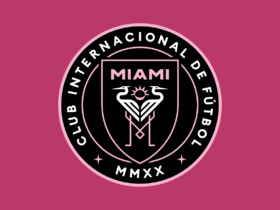Steve Adubato’s Lessons in Leadership with John Devin, President, Fedway Associates and Andre Goy, MD, Chairman & Chief Physician Officer, John Theurer Cancer Center, Physician in Chief, Hackensack Meridian Health Oncology
On this edition of Steve Adubato’s Lessons in Leadership with Co-host Mary Gamba, Steve and Mary are joined by John Devin, President, Fedway Associates, talking about the importance of innovation in challenging times, as well as fostering a culture of team building and mentoring with an organization. Then, Steve and Mary talk with Andre Goy, MD, Chairman & Chief Physician Officer, John Theurer Cancer Center, Physician in Chief, Hackensack Meridian Health Oncology, about scientific innovation and leadership. 4/18/21
Asking questions is an art form. Some people are a lot better at it than others. The most effective professionals in sales, customer service or consulting, are those who truly understand how to ask questions. One of the most effective questioning techniques is called the “funnel” approach.
Consider the following:
What is the “funnel” approach to asking questions?
Picture what a funnel looks like, wide at the top and narrow at the bottom. The idea is to ask broad, very general questions at the start of a conversation and continue to narrow the focus of your questions with greater specificity. Your goal is to draw out your audience, be it one or one hundred, in an effort to capture their true wants, hopes and needs.
Move from general to more specific questions.
Your first question opens the door. You want to get the other person talking. Consider some general questions that achieve this goal: What do you like most about your work? What goals do you and your organization want to accomplish over the next six months? How do you see your personal and/or professional life changing over the next several years?
Actively listen.
After you ask the question, the key is to truly listen to what is said and make sure the next questions you ask tap into what you’ve heard. Start narrowing the funnel. So, for example, if someone responds to the question regarding what they like most about their work; “I enjoy the challenges I face on a daily basis and the opportunity to take risks,” a logical follow-up question would be, “That’s great, George, but could you tell me of a recent challenge you’ve had in the last month or so?” or, “What’s the biggest risk you’ve taken recently and how did it work out?”
Get even more specific.
Now you are getting to the bottom of the funnel. “What was the reaction of those around you to how you took on the challenge?” or “When you took on that risk, what was your greatest fear or concern?” Then finally, at the bottom of the funnel, you might say; “What’s the biggest lesson you’ve taken away from this?” Resist the urge to jump around to different topics or other lines of questioning that have nothing to do with the area you are attempting to explore. You can’t have several funnels going on at the same time.
Have a game plan.
One of the biggest questioning mistakes people make is to ask questions without a game plan. They are all over the map. It is as if they think that magically they are going to unearth some crucial information with this haphazard technique. Well, it is not going to happen. Plus, you are wasting valuable time and turning people off.
The funnel approach is helpful in solving problems and identifying opportunities.
Consider this. If you are in a debate with someone, what do you accomplish by simply arguing the same point over and over again? Usually nothing. So, instead of arguing with someone, ask a question; “Jim, I want to understand this. If we do what you propose, what impact do you think it will have on our customers?” The goal is to get out of argument mode and move to a more productive dialogue. A probing question is a great way of switching gears. Then, once Jim responds, you can proceed with the funnel approach by asking a more specific question. Simply put, questions are powerful, so how you ask them should be taken seriously.










